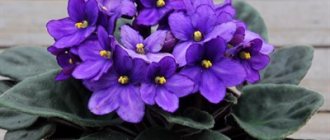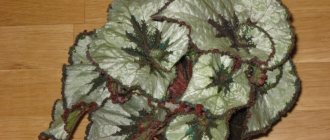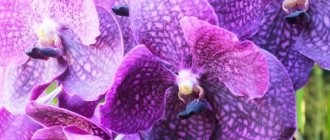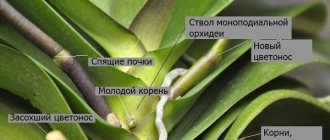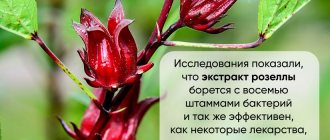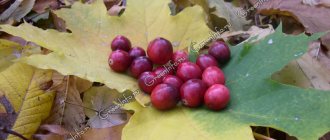Violet Lovestruck (LLG/Sorano), or Madly in Love
Photo and description of the variety
The socket is a large standard. The foliage is quilted, large, dark green. The underside of the leaf plate is red. The petioles are long and brown.
The flower is a large pink star with blue fantasy flecks and a dark purple border around the edges of the petals. The flowers are slightly ruffled.
The diameter of the flower reaches six centimeters. As the bud blooms, the color becomes more and more saturated .
The eye has a more saturated color than the petals. The flowers remain fresh for a long time , but the rich color becomes paler after several weeks of flowering. Burns out quickly.
If you look at a flowering plant, you get the impression that the buds are glowing from the inside.
Peduncles are tall but thin . A large number of buds are formed on each of them. At first it blooms with a cap, but then the stems become thinner and the flowers fall into a rosette.
It is not always possible to collect the correct bouquet of flowers; more often than not, the result is disheveled.
Sports
The Lovestruck variety is prone to genetic mutations.
There is an officially registered sport. This is Nick-Loving Heart . Chimeric variety. This is a large rosette with semi-double fuchsia stars. Violet rays run down the center of the petals. Also, the petals retain fantasy blue blotches and islands with a lighter shade of pink.
American breeders also received a similar chimeric sport , it is called Love Potion . Both sports are very similar to each other.
Other genetic abnormalities in flowering are also possible
Violet tender lilac
Unanswered messages | Active topics
| List of forums » Violet House » Exhibitions in the Violet House Current time: Sat Nov 16, 2022 22:52 |
| List of forums » Violet House » Exhibitions in the Violet House Current time: Sat Nov 16, 2022 22:52 |
| Currently viewing this forum: Irina Khromova and guests: 26 |
| You cannot start topics You cannot reply to messages You cannot edit your messages You cannot delete your messages You cannot add attachments |
on> We recommend books Site news Club pages Saintpaulian Council of Russia Violets and Co., Dnepropetrovsk Kiev section “Saintpaulia”, Kiev Nevskaya violet, St. Petersburg Siberian violet, Novosibirsk Perm violet, Perm VILKA-NN , Nizhny Novgorod Kiev Gesneriev Collectors Club “Violet Studio” CLS “Violets on Murman” Violets on the Neva, Nkt-Petersburg Lugansk club “Viola” “Violets of the Black Earth Region”, Voronezh “Flower Fantasy”, Volgograd “ Violets. New Wave”, St. Petersburg CLS “Violets of the Black Sea” (Krasnodar region) “Violet World”, Odessa Odessa Regional Violet Collectors Club “VELES” VioletKaaz, Vladikavkaz Collectors of the South of Russia, Southern Federal District, Krasnodar Club of Gesneriev lovers and other families of indoor plants “Violets of Voronezh” Violets Standard violets Aksenkina O. Arkhipov E. Korshunova E. Kraiduba E. Lazarenko G. bsp; Skornyakova N. Robinson Sorano Other breeders Miniature violets Trailer violets Chimeras Chimera lovers club Folk chimeras Reproduction of chimerasGrowing Preparation for the exhibition Diseases and pests Signs of infection Control preparations Shelving and lighting on> Varieties Moreva K.L. Varieties Repkina S.N. Varieties by N.D. Berdnikova First steps in selection Plants of the Gesneriaceae family Streptocarpus Streptocarpus Peter Kleschinski Streptocarpus Dimetris Streptocarpus Kabanova-Trofimenko Streptocarpus of Russian and Ukrainian selection Streptocarpus of foreign selection All about streptocarpus Gloxinia and Sinningia value=”26 ″> Other Gesneriaceae Koleria and Pyrcia Primulina (Chirites ) Smithianths Petrocosmea Columnaea, Aeschynanthus, Nemantanthus, Codonanthus Other Gesneriaceae Clubs and exhibitions of Gesneriaceae Exhibitions of violets in America Exhibitions of Gesneriaceae in America Jumble Flower news and other impressions In the animal world The natural world We are looking for like-minded people Administrator page General questions Your suggestions
www.domfialki.ru
Purple varieties
Each person tries to surround himself with objects of a certain color. This color changes depending on age.
Florists are people too, and in their collections they prefer the colors and shades that best suit their mood at the moment.
Fortunately, even in text mode it is possible to convey the emotional component of a shade, for example, the purity of a snow-white color scheme. We will try to convey the beauty and nobility of lilac violets.
- Lilac Charm. The variety has impressive (relatively) lilac flowers with three dark lilac markings in the middle of the flower. The fringe is a thread of the same dark color, only along the edge of the petals;
- Beloved Daughter. Large, simple plants of a soft lilac lavender hue, with a thick dark purple fringe on the edge of the petals;
- Lilac tenderness LE - classic Uzambara violets with large soft white-lilac or white-pink double flowers, shaped like large stars. Has a standard light socket;
- Unobtrusive Sadness LE. A soft blue plant with slightly darker petal tips. The piquancy of the flower is given by the green ruffle along the edge of the petal. This violet has dark, slightly wavy leaves that shine;
- Currant dessert-EK. Voluminous fluffy and half-double stars with pronounced fringe of an extremely beautiful shade, reminiscent of blackcurrant jam. The foliage is green and velvety.
- EK-Mikhail Lermontov. Just giant lilac Saintpaulias, decorated with fringe. The peduncles are strong, pronounced, the rosette is dark, has an exhibition appearance;
- EK-Turquoise Jellyfish. An interesting fact is that Saintpaulias of this species are truly impressive in size (about 7 cm in diameter). They have a “marine” shade of petals and sky-blue fringed edges. The rosette of these violets is green and compact, consisting of pointed leaves.
- Ward Brown - Impressive violets in terms of size with huge fluffy inflorescences. These Saintpaulias have a rich amethyst (inky color), star shape with slightly curved lilac-bluish edges;
- Velvet Frost are very large, half-double stars with white trim. Saintpaulias of this type are distinguished by lush flowering, a neat base of the petals and green leaves with a ruby-red underside;
- Rodeo Roper is a relatively large Saintpaulia with a velvety purple color. The flowers are edged with a contrasting, slightly embossed white border;
- Rodeo Glory - impressive velvet violets with dark purple double flowers that shimmer with black. Saintpaulias of this type have the edges of the petals in the form of an accordion;
- Rebels Centennial Mtar (R. Bunn) – Extremely voluminous dark ruby half-double stars with dark green leaves;
- Optimara Van Gogh (Holtkamp) Huge size violets the color of a concentrated solution of manganese in the shape of a star with green foliage;
- Optimara Hisako is a rather large dark purple or dark cherry pansy with a distinct white center. Very impressive;
- Maria Silvia. Common pansy with a light lilac flower. The ends of the petals of this Saintpaulia are dark lilac, and the foliage is green;
- Lions Pyum-Pudding is a rather original semi-double two-color Saintpaulia of dark plum and red shades. Frilly star.
- Louisiana Lulubai - by normal standards, these are simply huge violets (8-9 cm in diameter). These Saintpaulias come in double, semi-double stars in a soft lavender hue with dark purple flower tips;
- Fisher Lyon. Plum-purple violets with pink stripes, dashes and strokes in the power of fantasy;
- Dixie Doris - Quite large double violets of various shades of lavender with dark endings at the tips of the petals and a greenish-white wavy border;
- Carmival (F. Tinari) - relatively large Saintpaulias of soft purple shades with a green flower base and the same leaves;
- Apache Shadows are dark red-purple plants with wavy flowers. These flowers feature variegated green foliage with pink and white splashes.
- Apache Midnight and Rodeo Glory. Large dark plum flowers with double velvety petals. The inflorescences have black petals with accordion-shaped edges and a thin white edge. Pronounced green foliage;
- Apache Magic - relatively large, semi-double inflorescences of a dark purple hue. They are distinguished by strongly wavy white-green edges. White and pink variegated;
- EK-Baltica. Extremely large semi-double light purple flowers with a wide white border on the petals;
- Rebels and Centenual Star are impressive simple dark semi-double blood violets shaped like stars. They have dark green pointed leaves. They are distinguished by rich and bright flowering;
- Fischer Lyon. A simple dark semi-double flower in a plum pink fantasy style;
- Child's favorite. White half-terry lace Saintpaulia with blue eye, rays and border. The base of the petals is green, flat and somewhat quilted;
- Buckley Blushing is a semi-double or double lavender lace pansy in a purple fantasy style.
Caring for a plant at home
The Lovestruck variety is prone to fading. The bright shade on the petals lasts no more than two weeks.
In order for the violet to delight the owner with a riot of colors, it should be kept in the coolest possible conditions.
Proper watering and fertilizing
For full development and flowering, Saintpaulia needs nutrients. Violet receives micro- and macroelements from the soil. After transplanting into fresh soil, the need for fertilizing temporarily disappears. But after two months it is already worth making the first fertilizing.
Since the violet grows in a small pot, it is worth fertilizing frequently and regularly . Mineral supplements contain the necessary substances for the development of green mass or flowering:
- when the plant is small, it is fed with nitrogen . This allows you to grow a full-fledged rosette in a shorter period of time;
- when the violet begins to bloom, fertilizing containing phosphorus and potassium . These substances allow you to prolong flowering, as well as maintain the saturation of shades for a longer period of time.
But ready-made mineral compositions do not contain the necessary substances in full. Fertilizers of organic origin contain a greater amount of useful substances.
But they have a significant drawback - a high concentration of nitrogen. This is good for a plant that is forming a rosette, but not for that violet that has begun to bloom buds.
As a result of overfeeding with nitrogen, violets may stop flowering and begin to actively grow. The Lovestruck variety is not prone to excessive formation of lateral shoots, but with excess nitrogen this is possible.
Saintpaulia is not demanding when it comes to watering, but does not like drying out . Since the outlet is very large, the evaporation area is quite large. This means that violet loves water very much. You can put it on a wick or pour it into a tray.
Attention! Water is given only when the top layer of the earthen clod becomes dry.
Lighting and temperature
Violet prefers long daylight hours. It should last 10-12 hours. In such conditions, you can achieve year-round flowering with short breaks.
With continued light, Lovestruck can bloom all year round.
Despite the rapid fading, the buds remain fresh for quite a long time.
At the correct temperature within + 18-22°C, the violet will bloom for several months.
Air humidity
The optimal option is 55%. A slight deviation from the norm is acceptable. If it is too humid, you should install special devices that capture excess moisture.
Too little moisture in the air causes the leaves to curl and the rosette loses its presentable appearance. To fix the problem, place a bowl filled with water next to the pot.
Soil composition
To grow Saintpaulia Lovestruck, you should use fertile soil rich in minerals and organic substances.
The soil should be light and loose , allow air to pass through well and retain moisture well. Without access to oxygen, violet roots will quickly rot.
You can use standard mixtures that are sold in flower shops. Do-it-yourself earthen mixtures are also suitable. There are many recipes for preparing such compositions.
Main components:
- humus;
- peat;
- river sand;
- leaf and turf soil.
Pruning and hygiene
Violet is not prone to diseases and grows and develops well at home. Caring for the plant consists of timely pruning, replanting, and removing dry and wilted flower stalks.
Reproduction methods
The easiest way to propagate is using leaf cuttings. From 30 to 50% of children go into sports. As a rule, the results are chimeric sports with different shades of rays in the middle of the petal.
If there is a need to obtain a plant with persistent varietal characteristics, you should bring all the children to flowering , and only then sell or give away the surplus.
Leaf propagation.
Advice! As a rule, each baby has its own individual characteristics, which can manifest themselves both in the shade of the petals, the duration of flowering, and in the brightness of the buds.
Transplant rules, rejuvenation
The rosette is large and needs regular replanting and rejuvenation. Approximately once a year in the period between flowering violets should be replanted:
- The plant falls out of the pot;
- Dry and depleted soil is carefully shaken off and replaced with new soil;
- If the root system has grown too large and does not fit into the pot, it should be trimmed a little. You can remove between a third and half of the roots. First of all, diseased or rotten roots are cut off;
- If a white coating has formed inside the pot, it should be removed. This can be done using a citric acid solution.
Mysterious lilac violets
Violets of any color are mysterious, mysterious, slightly mystical flowers , and lilac ones are no exception.
In this article we will talk about different varieties of lilac violets, which differ in shape, size, and shades.
Get acquainted with the information and advice from experienced flower growers, choose those that suit you , and photos of lilac violets will help you with this.
Energy of color
The popularization of violets has been in full swing lately. Thanks to the efforts of breeders, more and more people are decorating their homes with Saintpaulia . Beginning collectors are often afraid of failure when purchasing a particular variety.
The lilac violets described in the article are suitable for both beginners and experienced gardeners. What attracts these plants and why are they so popular?
The color range of lilac shades is large . There are not many of them in nature. Therefore, violets bred by creative and extraordinary people help bring harmony to the space of the house. It's warmer and more comfortable with them.
From all the variety of shapes - pansies, stars, bells, bowls, wasps - you can choose the one that suits you.
Terry, semi-double, simple, in the form of carnations or scalloped, with a border, fringe - they are equally beautiful and unique.
Lilac violets are fascinating, they have a mysterious energy that makes you kinder and calms you down. Chimeras and Saintpaulias with prints leave no one indifferent.
Important! It turns out that anyone can find a lilac Saintpaulia to their liking or create their own unique collection.
Stone Flower
The author of the original variety is Konstantin Morev. Saintpaulia grows slowly and loves natural light. The stone flower tolerates drought calmly. Forms sports.
The flowers are double and semi-double stars, up to 4 cm, the color is bright, raspberry-violet, the border is yellow-green. Petals have a dense structure.
The leaves are dark green, large, wavy. The socket is standard, symmetrical, even.
Attention! It blooms for a long time, does not form a hat, and produces few flower stalks.
Jan-Merilen
The author of the bright, rich variety is Natalya Puminova (Moscow). Saintpaulia pleases with cap blooms , often and in large quantities. Forms sports.
The flowers are large half bells, the color is lavender with a soft lilac tint, a bright blue fantasy pattern and a pink eye. The peduncles are strong and tall, holding 3-4 flowers.
The leaves are shiny, bright, light green. The socket is standard, smooth.
Shining stars
These mysterious and delicate lilac violets with a white border were created by Konstantin Morev.
Saintpaulias love good watering and sufficient natural light.
The flowers are very large stars up to 6 cm, the color is pastel lilac-violet, there is a white eye in the middle, and a corrugated white border along the edge of the petals. The flowers last for 2-3 weeks, but are classified as fallout. Peduncles grow tall and may bend slightly.
The leaves are medium green, with white variegation along the edges. The rosette is standard, large, with long petioles.
Summer twilight
The author of the unusually beautiful violet is Konstantin Morev .
Summer twilight - an unpretentious variety, blooms for a long time , at lower temperatures the border on the flowers becomes wider. Likes watering the soil from above or using a wick. Propagates easily , preferably by cuttings.
The flowers are large, 5-6 cm, double, color is lilac-violet, the eye is white, the edge of the velvet petals has a white border.
Peduncles are low and durable. Sometimes, due to the heaviness of the flowers, they may bend slightly downward.
Leaves are variegated and green. The socket is standard, looks smooth and neat.
AV-Russian Style
The author of the elegant Saintpaulia is the Violet Maker (Alexey Tarasov, Moscow). Not capricious . Does not require special care.
The flowers are large stars with a diameter of up to 7 cm, double, the color is lilac-violet, with a slight flicker, the border is white and green. The petals are dense, elongated, with a waxy structure.
It blooms super profusely and forms a beautiful head. Short, strong peduncles hold flowers well.
Leaves are medium green. The socket is neat, looks compact, standard.
Lilac beauty
The author of this marvelous variety is the spouses Boris and Tatyana Makuni . Saintpaulia blooms powerfully, abundantly, for a long time. Does not require special care.
The flowers are large, graceful, fringed, the color is pale lilac, warm, the edging is thin dark purple, dark lilac dots are located closer to the center. Peduncles are strong.
The leaves are round in shape, slightly wavy along the edges, green, slightly elongated. Has a large socket.
TOP 10 most popular varieties
An amazingly beautiful lilac violet with white fringe belongs to the selection of Violetkovod (Alexey Tarasov, Moscow).
The flowers are simple stars, the color is dark blue, with dark lilac fantasy, raspberry dusting and rare pink peas. Petals with a dense structure, a white border along the edge.
Peduncles are short and strong. The flowering is super abundant and lasts a long time.
The leaves are medium green, slightly toothed, and wavy. The socket is standard.
EK-Tibet
The author of the bright, contrasting variety is Elena Korshunova (Tolyatti). The name is inspired by the pre-dawn views of Tibet.
The flowers are very large, semi-double, the color is in the form of purple-violet spots on the petals, a white eye and a wide snow-white frill. The petals are wavy and airy.
Peduncles are slender and strong. The violet blooms wildly, the bouquet does not fall apart.
The leaves are deep green, round, and medium-sized. The socket is smooth and compact.
EK-Lilac aura
Exquisite, romantic light lilac violet from the collection of breeder Elena Korshunova (Togliatti).
Saintpaulia is not capricious , it is easy to tame and care for. In the first flowering it can be upsetting due to the untidy shape of the flowers. Don’t be upset; as you grow up, EK-Lilac aura will delight you with a first-class bouquet.
The flowers are large, 6 cm each, the color is iridescent lilac, with a purple eye. The fringed petals have a purple edge. It blooms with a beautiful hat. Peduncles are strong.
The leaves are dark green. The rosette is luxurious, exhibition, smooth.
Apache Jewel
The authors of this cute variety are James Calvin and Lenora Munk , famous breeders from Texas, USA. Saintpaulia blooms in bouquets, profusely, for a long time, about 2 months.
The flowers are semi-double and simple, up to 5 cm in size, lilac in color, with a dark eye in the middle. The edges of the petals are dark purple. The shade of the lower petals is lighter.
The leaves are openwork, dark green, variegated along the edge. The socket is smooth, small, standard.
Cosmic Blast
The author of the original variety is Paul Sorano . Saintpaulia is unpretentious, grows quickly, and blooms for a long time. Needs good lighting. Can go into sports.
The flowers are stars, very large, up to 6 cm, dark purple in color. Petals with corrugated edges, a thin white border and bright fuchsia spots. Peduncles are long.
The leaves are variegated, dark green with a white edge. the socket may pull upward.
The author of this amazingly airy variety is Violetvod (Alexey Tarasov, Moscow).
The flowers are large charming stars measuring 6.5 cm, the color is white with lilac shadows. The petals are dense, wavy, edged with a thin green ruffle. In a cool place the border becomes brighter. Peduncles are short, strong, and form a cap.
The leaves are a juicy bright green color, the structure is slightly wavy. socket , compact, neat shape.
Important! You have to wait a long time for flowers, but they bloom for a long time.
Sora Fuzzy Face
Sora Fuzzy Face translates as “fuzzy face” or “fuzzy face.” The authors of the variety are Barbara Werness and Ruth Bann (B. Werness / R. Bann) - Saintpaulia breeders from Minnesota, USA.
The flowers are charming, discreet pansies in 2 tones: gray-lavender and smoky blue. Petals slightly elongated. Blossoms like a bouquet. Shades can change - lighten or darken. Peduncles are long.
The leaves are green, elongated, slightly variegated. The socket is even, standard.
EK-Lavender Mirage
Bright Saintpaulia selected by Elena Korshunova (Tolyatti). Violet loves natural light and feeding.
The flowers are lovely large double and semi-double, lavender blue with shimmering fantasy purple-blue splashes. It blooms very profusely. The hat is thick and luxurious. It happens that flowers with different shades bloom on one rosette. The peduncles are strong, bearing 5 or more buds.
The leaves are dark green. The rosette is standard, neat, 30 cm. Leaves can lift up.
LE-Lilac tenderness
The author of the luxurious variety is Elena Anatolyevna Lebetskaya (Ukraine). Saintpaulia reproduces well by stepsons and blooms for a long time.
The flowers are lush double stars, large, up to 6 cm, the color is soft lilac. Petals are corrugated. In the first flowering there are few peduncles. They do not form a cap.
The leaves are oblong, light green. The rosette is standard, large, not compact, with few leaves.
AE-Lilac whirlwind
The unusually delicate white-lilac violet is the fruit of the labors of breeder Evgeny Arkhipov (Moscow).
The plant does not require special care. Blooms profusely almost all year round.
The flowers are double, airy, white with a pink center and lilac fantasy. Forms a beautiful bouquet. It becomes brighter with each bloom.
The leaves are medium green, wavy, growing in the form of a small, neat, even rosette.
Useful videos
Watch the video about the violet EK-Tibet: - review of the violet Stone Flower:
The following video talks about the violet Starlight:
Below is dedicated to the Summer Twilight violet:
Conclusion
Lilac violets can become full participants in your living space. The main thing is to make the right choice, provide them with comfortable conditions and care . Use the following tips:
- You can choose different planting material for your collection: cuttings, children, starters or adult plants are suitable. The main rule is to buy them from trusted sellers, at exhibitions or in specialized stores ;
- the pot must have a label with information about Saintpaulia , which you need to read before purchasing: features of violets;
- size of rosette, flowers;
- colors;
- plant age;
- features of care, transplantation, reproduction.
The breeder puts a piece of his soul into each variety. Treat their creations with respect and care , then your homemade Saintpaulias will give you kindness, harmony and tranquility.
Source: https://komnatnie.com/fialki/sorta-fi/tsveta-f/sirenevye.html
Features of flowering, growth and reproduction
Violet grows and develops at home quickly and without any problems. He is not capricious. An adult rosette that produces full flowering grows in about a year.
Varietal characteristics are poorly transmitted; in about half of the cases genetic mutations are obtained. Tends to form chimeric sports.
In cool conditions it produces brighter blooms.
Peduncles are tall, thin, and do not hold flowers well. Despite the fact that there are a lot of buds, it is difficult to get a lush head. One bud blooms for more than a month.


